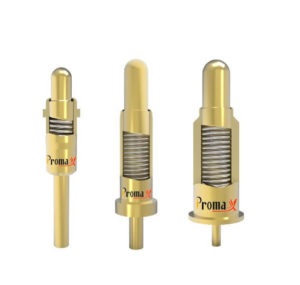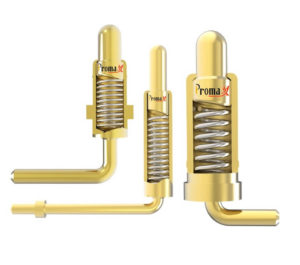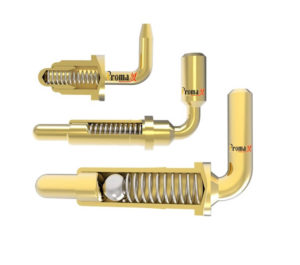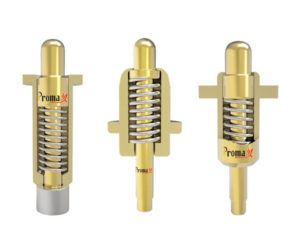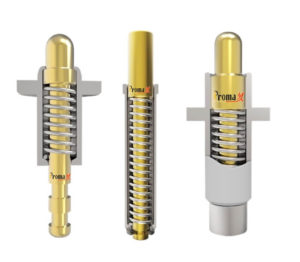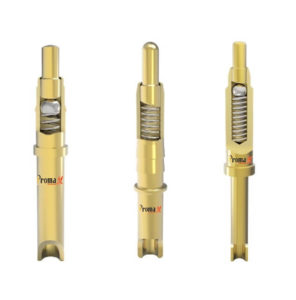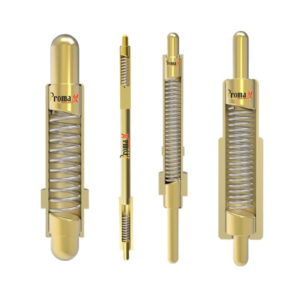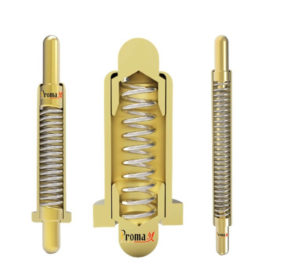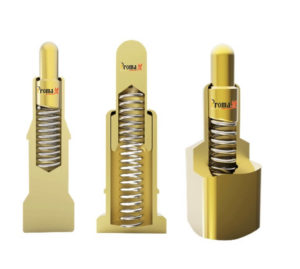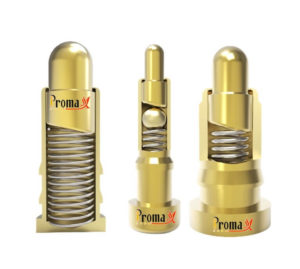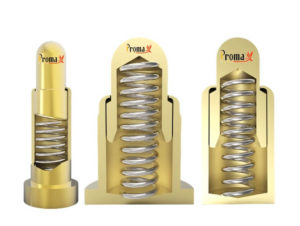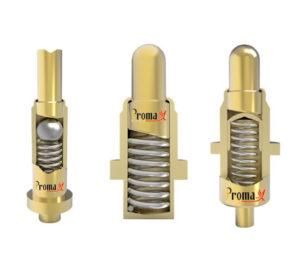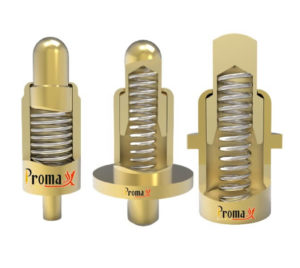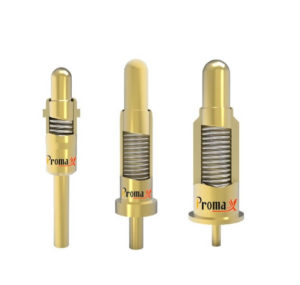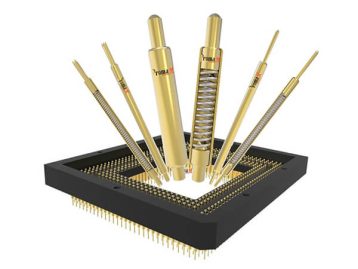If you are an engineer working with Pogo Pins or Pogo Pin Connectors, you would have come across the term “Spring Force.” But what exactly is Spring Force? Is it a Contact Force? In this article, we will answer these questions and more. So, if you’re interested in learning more about the Spring Force, read on!
What is a Spring Force?
- A Spring Force is a type of force that can cause an object to move, change shape, or compress. It is caused by the elasticity of a material, which is the ability of a material to return to its original shape after being deformed. When a force is applied to an elastic material, it causes the material to deform. The material will return to its original shape if the applied force is removed.
- The amount of deformation that a material undergoes is determined by its Young’s modulus, which measures a material’s stiffness. The Spring Force is proportional to the amount of deformation, and it is directed opposite to the direction of the applied force. The greater Young’s modulus of a material, the greater the Spring Force it can generate.
What is a Contact Force?
- According to physics, a Contact Force is the force exerted by one object on another when the two are in contact. Interacting particles create this type of force at the atomic or molecular level. In other words, it is the force that neighboring particles exert on each other.
- Contact Forces can be either attractive or repulsive. The most common examples of Contact Forces are friction, air resistance, and tension. These forces typically act for opposing the motion of an object. For example, friction creates a force that opposes the motion of an object across a surface.
- Similarly, air resistance creates a force that opposes the motion of an object through the air. Contact Forces can also be used to create motion. For example, tension is a Contact Force that can be used to pull an object along a surface.
- Without Contact Forces, objects would move freely without any resistance. Although they may sometimes seem like nuisances, Contact Forces are essential for everyday life.
What is a Pogo Pin?
- A Pogo Pin, also commonly referred to as a spring-bump connector, is a type of electrical connector used in various applications. This versatile connector is typically made from a metallic spring material and features small cylindrical protrusions on either end. One end of the pin gets inserted into one side of an electrical device, while the other end gets connected to another piece of hardware or machinery.
- Because it has a simple design and can be easily manipulated, a Pogo Pin is often used in systems that require reliable and fast connectivity over long distances. Some examples of applications where Pogo Pins are found include automotive testing equipment, portable testing systems, computer peripherals, robotics, etc. Overall, the humble Pogo Pin is an essential piece of technology that plays an important role in many areas of our lives.
Is Spring Force a Contact Force?
- Yes, the Spring Force is a Contact Force. This type of force is generated when an elastic material, such as steel or rubber comes into contact with another object. Because it relies on the interaction between particles at the atomic level, this type of force cannot be created without direct physical contact between two objects.
- Some examples of common applications where Spring Force can be seen include Pogo Pins, tires, shock absorbers, springs in mechanical watches, and many others.
- Due to its fundamental role in mechanics, a Spring Force is one of the most important concepts in physics and engineering. As such, it is essential to understand how this type of force works and its applications.
- Contact Forces are always exerted between two objects, so a single object can’t experience Spring Force. This type of force can only be generated when two objects are in direct contact.
How is Spring Force a Contact Force?
- Spring Force is a type of Contact Force, meaning that it only has an effect when two objects are in physical contact. This means that we can experience Spring Force only when an object hits another object or when one object presses against another.
- For example, if you jump up and down on a trampoline, you will experience the force of spring action as your body moves back and forth against the trampoline’s surface.
- Similarly, if you press down on the ground with your feet while walking or running, you will feel the Spring Force pushing back against your feet as they push against the surface. Ultimately, Spring Force arises from interactions between atoms and molecules in a material.
- Its effects depend on both the properties of the material and how it is moving or being acted upon by external forces. Thus, while Spring Force may seem like a simple concept, it involves complex physics at a microscopic level. Understanding this complexity can better harness Spring Force for practical purposes such as engineering and design.
How is the Spring Force different from the Tension Force?
- The Spring Force and the tension forces are both vital forces that are involved in many physical systems. Though they may appear similar, there are important differences between these two forces. The primary difference is that the Spring Force can return to its original position after being stretched or compressed, whereas the tension force does not have this property.
- Additionally, the tension force acts within an object, pushing against itself and opposing any other forces acting on it. By contrast, the Spring Force exists only when another external force is applied–for example, you compress a spring by pushing on it with your hand.
- Another key difference is that the Spring Force varies according to how much stretching or compression occurs, while the tension force remains relatively constant regardless of changes in length or position. This is because both friction and thermodynamic effects reduce or increase a spring’s overall performance as it is stretched or compressed.
- By contrast, since there are no internal frictional forces or thermal effects involved in generating a tension force, there will typically be little variation in its strength over a wide range of positions and displacements. Ultimately, understanding these distinctions will help you apply each of these stress-related forces effectively in different types of physical situations.
How does Spring Force act in a Pogo Pin?
- Spring Force is the key to the operation of a Pogo Pin. This flexible, coiled metal wire provides the pressure that exerts a force on the pinhead. The spring also helps absorb shocks and vibrations, allowing the pin to maintain good electrical contact even under heavy loads or environmental conditions like high temperatures or constant vibration.
- Additionally, since each spring is designed to provide a specific amount of pinch force, its flexibility allows engineers to fine-tune this pressure depending on the size and composition of the surrounding components. Thus, the Spring Force ensures reliable and efficient performance in Pogo Pin applications.
What are the applications of Pogo Pins?
- Pogo Pins are used in various applications where a robust electrical connection is needed. They are often used as spring-loaded connectors for test and probe points, temporary connections, and battery charging contacts. You can also use Pogo Pins on printed circuit boards and other electronic devices where space is limited. Also, they are commonly used as connectors for cable harnesses and other wiring assemblies.
- In addition, Pogo Pins are also commonly used in robotics to create connections between components. By using the unique spring action of these pins, robot designers can easily connect different modules to create new and exciting machines.
- Furthermore, you can also find Pogo Pins in biomedical devices such as pacemaker electrodes and testing equipment for blood sugar levels. Given their ability to provide strong electrical connections with minimal effort, Pogo Pins are an essential component of many types of modern technology.
To Sum it Up:
The Spring Force in a Pogo Pin is a Contact Force. This means that force is exerted when the objects are in contact. The Pogo Pin can be a valuable tool in many applications. If you are looking for a connector that can handle high current and voltage levels with low contact resistance, then the Pogo Pin may be the right option.
Why Choose Us to Buy Pogo Pins from?
- At Promax Pogo Pins, we take pride in our reputation as a leading provider of high-quality Pogo Pins. Our customers trust us to deliver top-notch products and services that meet their needs and exceed their expectations. We combine the latest technology with rigorous testing and strict quality control to produce Pogo Pins of the highest quality and reliability.
- Whether you need standard Pogo Pins or custom-designed models, we have the tools, skills, and expertise to deliver outstanding results every time. So if you’re looking for a company that won’t let you down, look no further than Promax Pogo Pins. We guarantee you’ll be 100% satisfied with your purchase!
 Over 15 Years of Expertise
Over 15 Years of Expertise FREE samples provided to ensure product satisfaction
FREE samples provided to ensure product satisfaction Rapid Turnaround: Mass Production Complete in 15 - 20 Days
Rapid Turnaround: Mass Production Complete in 15 - 20 Days

